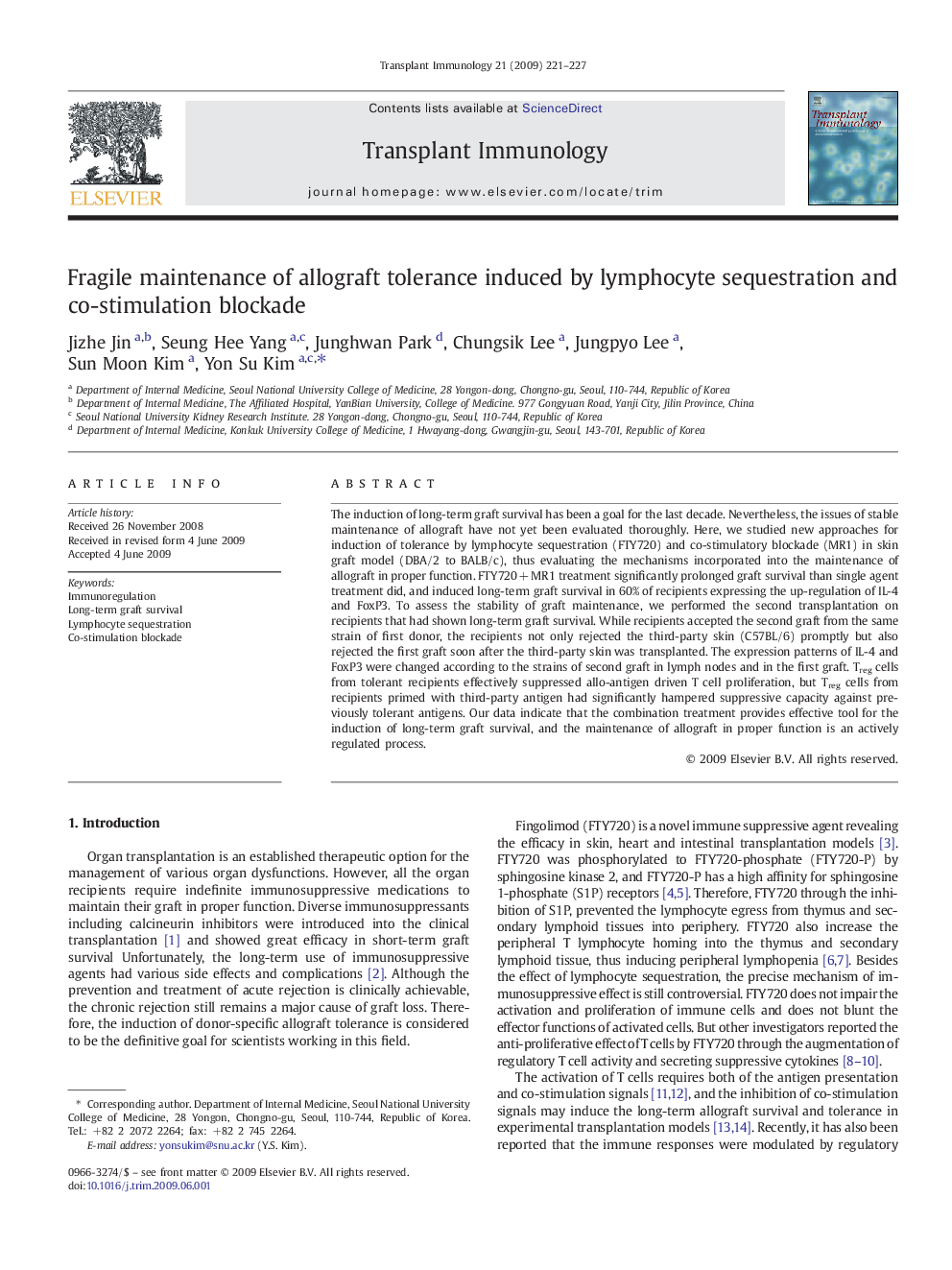| Article ID | Journal | Published Year | Pages | File Type |
|---|---|---|---|---|
| 3392378 | Transplant Immunology | 2009 | 7 Pages |
The induction of long-term graft survival has been a goal for the last decade. Nevertheless, the issues of stable maintenance of allograft have not yet been evaluated thoroughly. Here, we studied new approaches for induction of tolerance by lymphocyte sequestration (FTY720) and co-stimulatory blockade (MR1) in skin graft model (DBA/2 to BALB/c), thus evaluating the mechanisms incorporated into the maintenance of allograft in proper function. FTY720 + MR1 treatment significantly prolonged graft survival than single agent treatment did, and induced long-term graft survival in 60% of recipients expressing the up-regulation of IL-4 and FoxP3. To assess the stability of graft maintenance, we performed the second transplantation on recipients that had shown long-term graft survival. While recipients accepted the second graft from the same strain of first donor, the recipients not only rejected the third-party skin (C57BL/6) promptly but also rejected the first graft soon after the third-party skin was transplanted. The expression patterns of IL-4 and FoxP3 were changed according to the strains of second graft in lymph nodes and in the first graft. Treg cells from tolerant recipients effectively suppressed allo-antigen driven T cell proliferation, but Treg cells from recipients primed with third-party antigen had significantly hampered suppressive capacity against previously tolerant antigens. Our data indicate that the combination treatment provides effective tool for the induction of long-term graft survival, and the maintenance of allograft in proper function is an actively regulated process.
